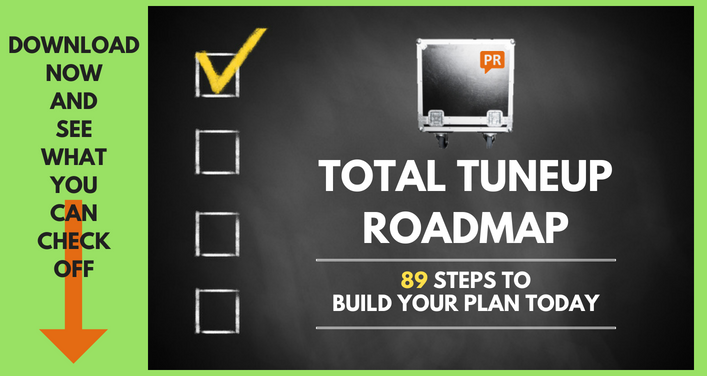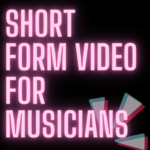 This article was contributed by John Oszajca (@JohnOszajca), a singer/ songwriter who has released albums for Interscope and Warner Brothers Records and is the founder of Music Marketing Manifesto.
This article was contributed by John Oszajca (@JohnOszajca), a singer/ songwriter who has released albums for Interscope and Warner Brothers Records and is the founder of Music Marketing Manifesto.
We’ve all heard a lot of talk about the “1000 fan” model. The concept being, that an independent artist only really needs 1000 true fans in order to make a living from their music. But one only needs to run a few quick numbers before you start scratching your head, wondering just how that’s going to work. Because with the average album selling for about $10 a pop, one thousand sales is a mere ten grand. Hardly enough to call an income.
So how exactly does one make a living from 1000 true fans?
Well, if you are only selling albums then the reality is that it’s going to be tough. The reason being that music is one of those products that is priced so low that it’s difficult to afford using traditional advertising to grow your fan base. And chasing radio is nearly always a huge waste of money unless you are spending hundreds of thousands of dollars on a large scale branding campaign. And so independent musicians are left with touring, as the only viable strategy we have for getting our music in front of new people and selling albums. But unfortunately, touring is expensive and difficult to sustain for more than a few months of the year.
Fortunately, there is a way to make that utopian 1000-true-fan-model actually work, using direct to fan marketing. Direct to fan (aka direct response marketing) differs from traditional marketing in that instead of simply seeking “exposure”, we use proven selling techniques to build an email list of subscribers, build a relationship with those fans, and then use various sales triggers to knock people off of the fence and convince a consistent percentage of them into ACTUALLY buy our music.
So let’s take a look at some numbers…
Let’s say you’d like to make $80,000 a year from your music. And let’s say that your primary offer (your album) converts at 5%.
That means that for every 1000 email subscribers you will sell 50 copies of your album. If your profit margin is $10 per album then you will make $500 per 1000 subscribers.
So far your average subscriber value will be $0.50.
Now, let’s say that you add a $40 upsell to your sales funnel and 30% of your initial buyers take you up on it (that’s an approximate industry average). That upsell could be a box set, a membership site, even T-shirts and more traditional merch.
That would mean that 15 of your 50 customers also bought your upsell bringing in $600 of additional revenue and boosting your subscriber value to $1.10.
But we’re not done…
Now let’s say you promote a house concert offer to your list a little down the line, and basically charge any interested fans $400 to have a private concert in their home.
Let’s say just 5% of you’re album buyers take you up on this…
That would mean that 2.5 people out of every 1000 subscribers would hire you, bringing in $1000 in additional revenue and bringing your subscriber value up to $2.10.
Now we need to take our income goal of $80,000 and divide that by $2.10. That means that we will need to generate 38,095 subscribers per year to meet our income goals (if we are trying to meet them within one year).
The average well structured lead capture page (just a fancy way of saying, the page where people sign up to your mailing list in exchange for some free music), converts at 25% – 40%. So lets make the math easy and say that yours converts at 33.3%. So now we know we need to drive 114,285 people to our site each year…
Starting to sound like a lot right? But hold on a sec…
Divide that number by the 365 days of the year and we only need 313 people to come to our site each day.
If we published just one search engine friendly piece of content each day for a year, and if we assume that we got an average of just one click per day from each piece of content, we could theoretically be on track in less than a year.
Maybe you decide that you don’t need to make $80,000 each year to survive. Heck, teachers make half that.
If you decided you could live on $40,000 a year you would only need to drive 157 people to your site each day…
That’s a mere 157 people each day to accomplish your life long dream of making a full time living as a recording artist.
If you are inexperienced with online marketing and promotion than you’ll have to take my word for it… 157 people a day is NOTHING!
Sure it will take some work. But getting in front of 157 people a day is something that ABSOLUTELY every musician can do. Don’t have the time or interest to do the work? Pay for the traffic. It will take an upfront investment, and there WILL be risk, but you can easily generate 157 clicks per day for far less than what most independent labels are spending to promote an artist.
While you’ll need to slide the numbers around a bit to reach your income goals, all you really need to focus on is bringing in new subscribers for less than what it ultimately costs to acquire them. And when you start offering upsells, running promotions, and pushing live events to your list, getting that subscriber value up high enough to cover advertising costs really becomes possible.
And remember, while some subscribers will drop off or go cold, the effects are compounding. Meaning that your income should grow from year to year as you add new fans each and every day to your list. Put in the work or spend the money now and you will still have most of those fans for many years to come.
Eventually your list will grow into the tens of thousands and you will start to have some real influence over your market. Furthermore, this is something you can do WITHOUT the help of labels, managers, or agents.
When you embrace the Direct to Fan Marketing approach, you are in control of your career, and monetizing your music is no longer some wishy-washy act of faith, but rather a sound business plan which affords you the ability to take specific actions which will get you the results you are after. Which ultimately is to be heard, make a real difference through your music, and to generate enough income to sustain your life as a musician.
If you’d like to watch a free 40 minute video presentation in which I go through each step of the process in detail, go to MusicMarketingManifesto.com now and claim your free copy of the Music Marketing Blueprint.
12 Days of Monetization is a 12-part series designed to help you make more money. Ariel and team Cyber PR asked 12 of their favorite colleagues to contribute and we hope you enjoy this series.












So if “2.5 people out of every 1000 subscribers would hire you” to do a house concert @ $400 each, and “we will need to generate 38,095 subscribers per year to meet our income goals,” then that equates to about 95 house concerts a year, or an average of two per week. Seems like a lot of house concerts, and most of the year’s weekends (most likely) playing them, leaving precious few weekend evenings to perform elsewhere. Or am I missing something here?
The ones who are really successful with house concerts do multiple shows PER DAY. Some up to four or five on a Saturday or Sunday. Seems insane, but it’s being done. So 95 house concerts could be performed in three or four months! Personally, I would raise the price of the HC to $500 or $600 and do fewer shows for the same money. ~neil
Thanks for the clarification. I suppose you’d have to 1) live in a fairly large city, and/or 2) have a fairly large fan base and money to travel in order to pull this off, right?
Like John points out in the article, you’re going to need to build a fan base to support this model. Although the quality of your fans is more important than the quantity. I know performers who do alright with HCs on a relatively small email list. As for travel expense, I would build that into the sale price of your house concerts. If you can schedule 3-5 shows in one weekend in one area then you can spread the costs around. Many performers ask for room and board from their hosts as part of the cost. ~neil
Hi Alan,
The article just lays out one way of slicing the numbers. You can move price points and income requirements all over the place to still make things work. But yes, in this scenario that would be correct. But for example, I have a friend who charges about 1k per house concert and books a summer concert each year, performing 2, sometimes 3 shows a day (as Neil touched on). But he makes 6 figures a year and is only required to be away from home for 1 – 2 months of the year. Another thing to consider is that with house concerts, you will make a good deal in album and merch sales because they are so intimate. While it’s far from free money, it’s a better scenario than what most career indie artists are facing who find themselves trapped on the road for life.
But if house concerts were not for you, there are certainly other ways of meeting your income goals. Membership sites are a good one to consider, but any kind of fun and creative idea can work.
Also keep it mind, the benefits of a strategy like this are compounding. Each year your list grows and the effort required to generate the same amount of income from your list goes down. Not only does your fan pool grow, but your authority as an established artist goes up as well, in turn making it easier to pull in those sales and upping the amount you can charge for house concerts, etc. Some indie artists out there charge as much as $5k per house concert.
Hope that helps clarify.
I think the tough work lies in getting that traffic and finally converting those visitors into fans. I have made this (rather tough) experience:
– I put a (real) music video on youtube, which has been viewed 5.000 + times.
– 1st thing in the video’s transcription was a call to action: get a free mp3 of the song by signing up for my newsletter through which you’ll also get a 20% discount once the new album comes out (in 6 weeks). I added a link to a “squeeze page”.
– the approximate 5.000 views (NOT 5k unique people) let to a shocking 23 new subscribers.
I think that’s not really much – or is it? Rest assured, the music and the video are good, so that couldn’t have been the issue 😉
This is great. Thanks a lot